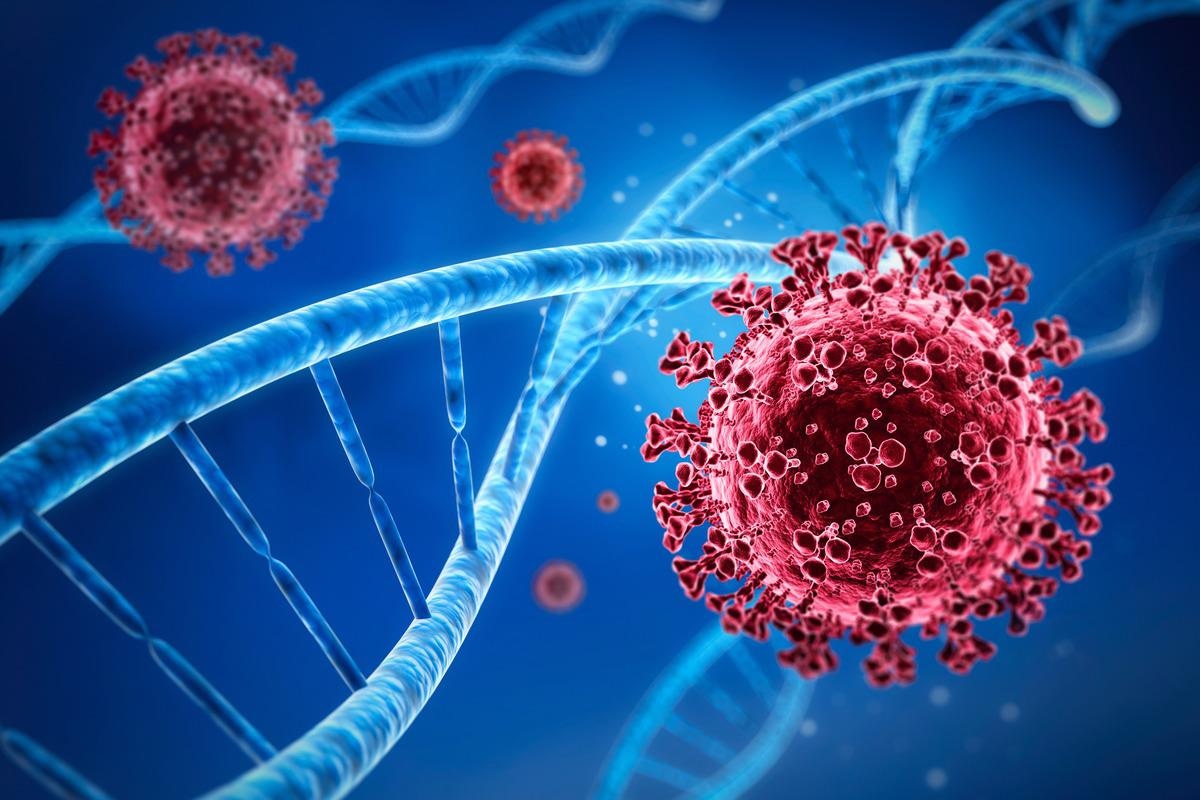In a recent study posted to the medRxiv* pre-print server, researchers demonstrated how narrow-sense heritability (h2) leads to variability in the susceptibility to coronavirus disease 2019 (COVID-19) infection and severity among different individuals.
 Study: A Monte Carlo Estimation of the Narrow-Sense Heritability of COVID-19 Infection and Severity from AncestryDNA Survey Data. Image Credit: peterschreiber.media/Shutterstock
Study: A Monte Carlo Estimation of the Narrow-Sense Heritability of COVID-19 Infection and Severity from AncestryDNA Survey Data. Image Credit: peterschreiber.media/Shutterstock

 *Important notice: medRxiv publishes preliminary scientific reports that are not peer-reviewed and, therefore, should not be regarded as conclusive, guide clinical practice/health-related behavior, or treated as established information.
*Important notice: medRxiv publishes preliminary scientific reports that are not peer-reviewed and, therefore, should not be regarded as conclusive, guide clinical practice/health-related behavior, or treated as established information.
Background
Genetic variability indicates variations in observable characteristics or phenotypes due to genetic makeup rather than environmental factors. The h2 is a subset of genetic heritability and depicts the mean of aggregate phenotypic variance due to all the genetic factors passed on from parents to their biological children. Thus, the h2 estimates for COVID-19 susceptibility and severity might indicate how it affects families.
On the population level, detailed knowledge of h2 could help inform public health interventions. It is of great significance as COVID-19 has created an environment of uncertainty, and its effective management and the prevention of its community-level transmission requires data-driven public health management. On the other hand, h2 estimates of COVID-19 susceptibility and severity could empower clinicians to monitor families at high risk of developing COVID-19 and accordingly allocate medical resources.
About the study
In the present study, researchers retrieved AncestryDNA data to present a Monte Carlo (MC) estimation of the h2 of COVID-19 infection (h2inf) and severity (h2sev). AncestryDNA and Regeneron pharmaceuticals privately collaborated to collect online data from volunteering respondents from their customer base. The survey assessed the severe acute respiratory syndrome coronavirus 2 (SARS-CoV-2) infection status, risk factors, exposure, and symptoms of each respondent. It also covered all the information related to each respondent's biological family members, including data on infections and hospitalization due to COVID-19.
The AncestryDNA survey data was derived by sampling a large, heterogeneous population. Hence, it had well-defined COVID-19 phenotypes and familial relationships and was ideal for h2 estimations. The team binarized the proband phenotypes for COVID-19 infection and severity for h2 estimations.
There were 2.24% of proband COVID-19 infections among respondents who reported a positive reverse transcription-polymerase chain reaction (RT-PCR) or antibody test for COVID-19 or had flu-like symptoms after February 2020. Likewise, there were 0.25% severe COVID-19 probands among respondents who reported COVID-19-related hospitalization, admission to the intensive care unit (ICU) with oxygen support, or a ventilator.
In the absence of meeting requirements for either phenotype, the proband phenotype was zero; otherwise, it was one. The team assigned zero phenotype for both outcomes to respondents who did not report their parents were infected or hospitalized due to COVID-19.
Notably, the MC simulation's household co-infection, ρ, was highly variable. The researchers simulated data of a proband reporting infection or hospitalization of one or both parents due to COVID-19 for the MC estimation; if one or both parents were infected (ρ i) and hospitalized (ρh). Additionally, they adjusted the study model for both phenotypes for sex, age, and smoking status.
Study findings
The h2 estimates of COVID-19 infection susceptibility, i.e., h2inf ranged between 0.1554 and 0.1833. For ρ values of 0.163, 0.170, and 0.530, respective h2inf values were 0.1554, 0.1577, and 0.1833.
Similarly, the h2sev values ranged from 0.0734 to 0.0751. For ρ values of 0.163, 0.170, and 0.530, h2sev values were 0.0734, 0.0751, and 0.0705, respectively. These h2 estimates indicated that the contribution of genetic heritability to COVID-19 infection was moderate, and COVID-19 severity was low.
Conclusion
To summarize, the genetic heritability component h2 could only partially explain the variability observed in the susceptibility to SARS-CoV-2 infection and its severity. Moreover, the MC estimations did not account for recessive effects or gene-gene interaction. Therefore, clinicians and public health professionals should adopt this approach with caution to monitor the biological family members of the individuals infected with SARS-CoV-2.

 *Important notice: medRxiv publishes preliminary scientific reports that are not peer-reviewed and, therefore, should not be regarded as conclusive, guide clinical practice/health-related behavior, or treated as established information.
*Important notice: medRxiv publishes preliminary scientific reports that are not peer-reviewed and, therefore, should not be regarded as conclusive, guide clinical practice/health-related behavior, or treated as established information.